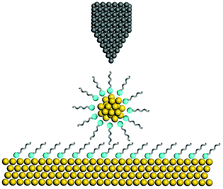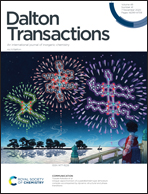Nanostructured surfaces from ligand-protected metal nanoparticles
Abstract
Nanostructuring surfaces with metal atoms or clusters represents a promising approach to create materials with unique electronic/magnetic properties and improved chemical reactivity. By means of plasma sputtering and mass spectrometric techniques, the deposition of precisely size-selected clusters onto single-crystal surfaces has been applied to prepare surfaces with tailored properties. However, nanostructured surfaces can as well be prepared with metal nanoparticles via solution-phase methods, but the difference is that nanoparticles prepared by wet chemistry are usually coated with a layer of ligands, which are essential not only for maintaining the size and the atomic structure of metallic cores, but also for playing crucial roles in the synthesis, physicochemical properties and catalytic activities of the nanoparticles. This Frontier covers aspects of nanostructured surfaces from ligand-protected metal nanoparticles, starting with high-resolution imaging of the ligand-protected metal nanoparticles, followed by periodic patterning of metal nanoparticles on surfaces and the well-controlled atomic layer deposition with nanoclusters at the liquid/solid interface. We also highlight the potential of the surface-supported structures from ligand-protected metal nanoparticles, and the challenges remaining to be tackled.

- This article is part of the themed collections: Spotlight Collection: Inorganic Molecular Electronics and 2020 Frontier and Perspective articles


 Please wait while we load your content...
Please wait while we load your content...